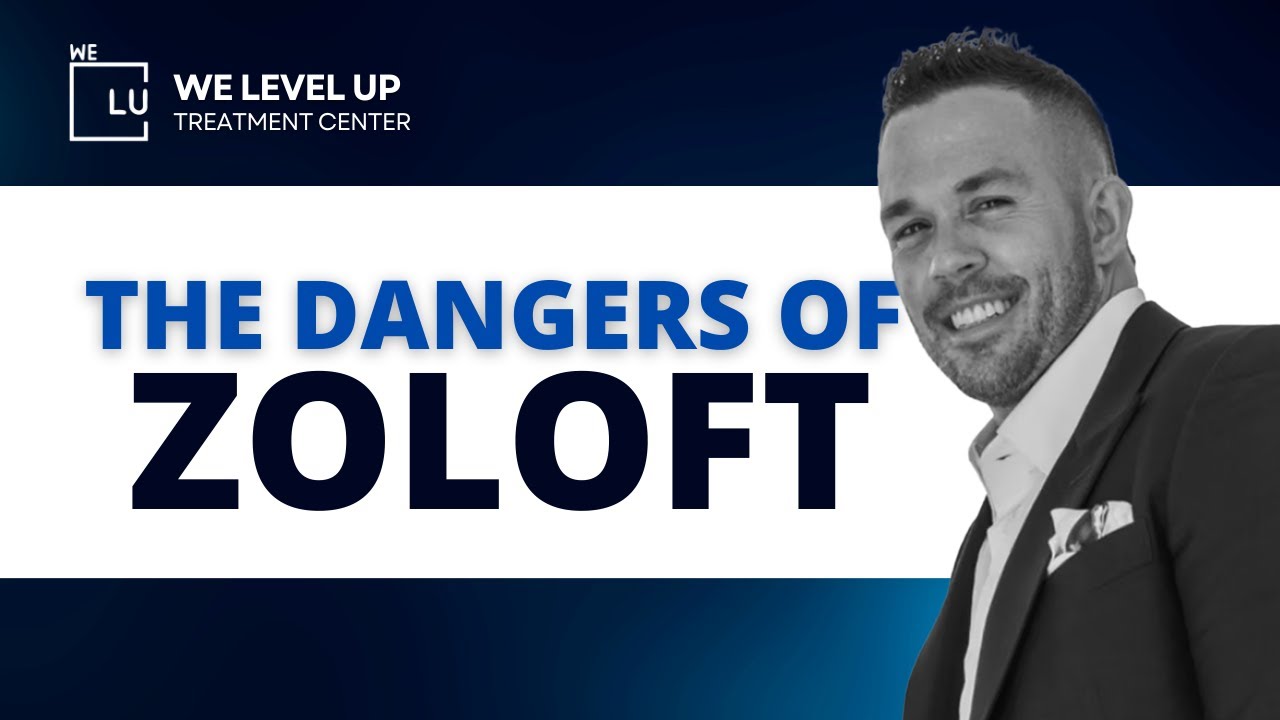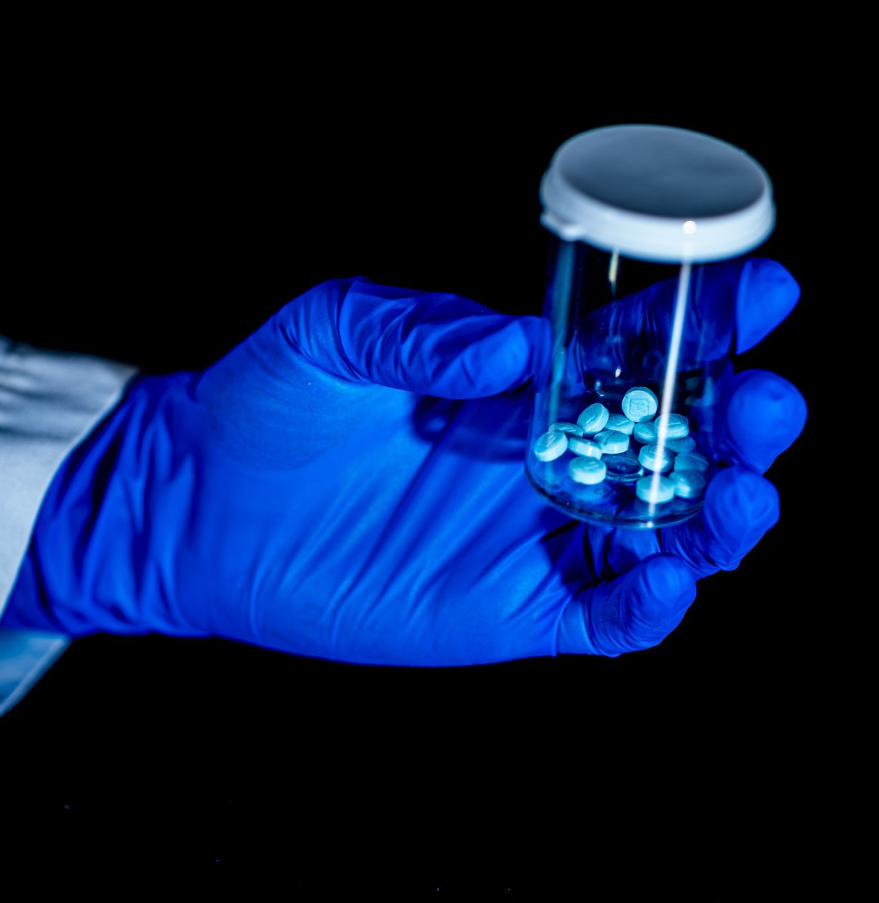If you or someone you care about has been prescribed a painkiller like tramadol and is considering drinking alcohol while taking it, it’s essential to understand the potential risks involved.
Abusing tramadol on its own can lead to severe health complications, and these risks escalate when combined with alcohol. Both tramadol addiction and alcohol dependency are closely linked to mental health issues. In the US, individuals often misuse substances like opioids or alcohol to cope with various chronic physical and mental health symptoms.
Let’s explore the dangers associated with mixing Tramadol and alcohol, as well as ways to seek support if you or a loved one needs help to break free from reliance on these substances.
If you or someone you know is suffering from Tramadol and alcohol addiction, the We Level Up Treatment Centers can help. Speak with our hotline specialists and discover the support and professional-accredited addiction treatment programs we offer.
What Happens When You Mix Tramadol and Alcohol
Though often perceived as a mild sedative, tramadol poses risks similar to other opioids, mainly when mixed with alcohol, necessitating immediate medical attention for any adverse effects.
While tramadol and alcohol affect the brain differently, they yield comparable effects. As central nervous system depressants, both substances interact with brain chemicals involved in pain/stress management and mood regulation. These shared effects, like relaxation and euphoria, contribute to their addictive nature. When combined, their effects intensify, heightening the risk of addiction and overdose.
Tramadol can slow vital functions like breathing, heart rate, and blood pressure. Alcohol further dampens brain activity. This combination can induce drowsiness, dizziness, impaired coordination, diminished judgment, and cognitive impairment.
Even moderate alcohol consumption alongside tramadol carries considerable risks. Their drug interaction creates additive side effects, significantly elevating the risk of a potential overdose.
How Does Alcohol Interact With Tramadol?
Combining painkillers such as tramadol with alcohol is not recommended due to the potential dangers posed by increased or intensified side effects. This is because both tramadol and alcohol are depressants, and their combination can lead to various concerning side effects, including:
- Slowed breathing.
- Reduced heart rate.
- Decreased brain activity.
- Seizures.
- Confusion.
- Stomach pain.
- Liver damage.
- Loss of balance and coordination (it’s unsafe to operate machinery under the influence of these substances).
- Coma.
- Out-of-character behavior.
The dangers associated with mixing tramadol and alcohol include a heightened risk of overdose. Alcohol can also interfere with tramadol’s efficacy, leading individuals to consume more tramadol while under alcohol’s influence to achieve the desired effects. However, this is highly dangerous and often results in a tramadol overdose.
Most tramadol overdoses occur due to combining the drug with alcohol. Professional warnings accompany tramadol prescriptions, cautioning against alcohol consumption when taking the medication to mitigate adverse side effects from mixing the two substances.
Another significant risk of combining tramadol and alcohol is the suppression of the central nervous system, where both substances slow down the body to such an extent that users become highly sedated. In severe cases, individuals can experience cardiac arrest due to this dangerous combination. Hence, it’s always advised for individuals contemplating mixing tramadol and alcohol to be aware of these dangers as they can be life-threatening.
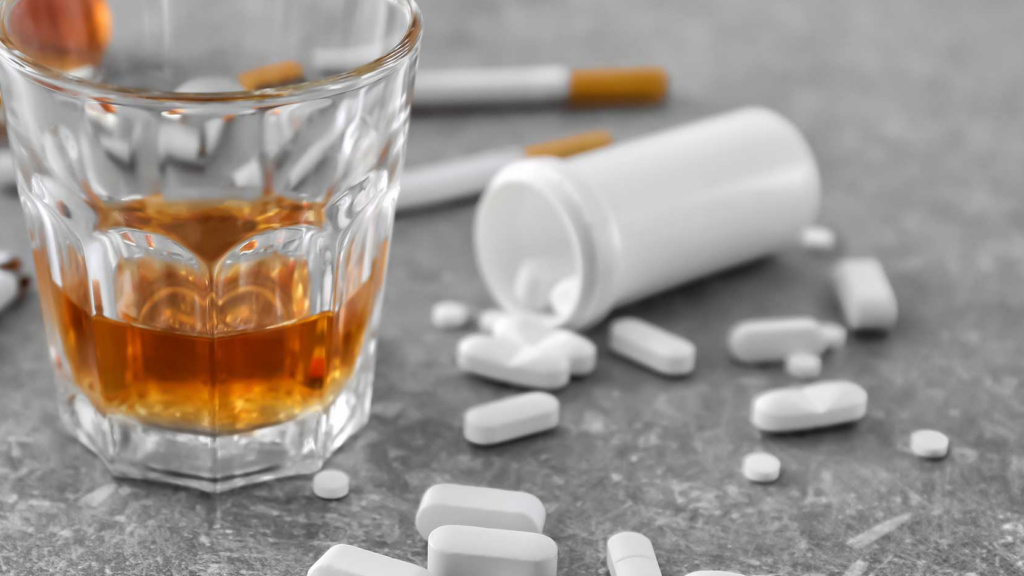
Skip To:
Learn More:
- Tramadol Withdrawal Symptoms, Timeline, & Detox Treatment
- Tramadol vs Hydrocodone: Are They Similar? Which one is Better For Pain?
- Tramadol vs Oxycodone: Which is Better? Side Effect Comparison
- Is Tramadol A Narcotic?
- Tramadol in Pregnancy
- Tramadol Serotonin Syndrome
- Opiate Withdrawal
- Opioid Withdrawal Timeline
- Opioid Withdrawal Symptoms
- Alcohol Withdrawal Fever
- Alcohol Poisoning Treatments
- Alcohol Withdrawal Symptoms
- Does Alcohol Help Anxiety
Get Help. Get Better. Get Your Life Back.
Searching for Accredited Drug and Alcohol Rehab Centers Near You? We Level Up Texas Is Opening Soon!
Even if you have failed previously and relapsed, or are in the middle of a difficult crisis, we stand ready to support you. Our trusted behavioral health specialists will not give up on you. When you feel ready or just want someone to speak to about therapy alternatives to change your life call us. Even if we cannot assist you, we will lead you to wherever you can get support. There is no obligation. Call our network hotline today.
FREE Addiction Hotline – Call 24/7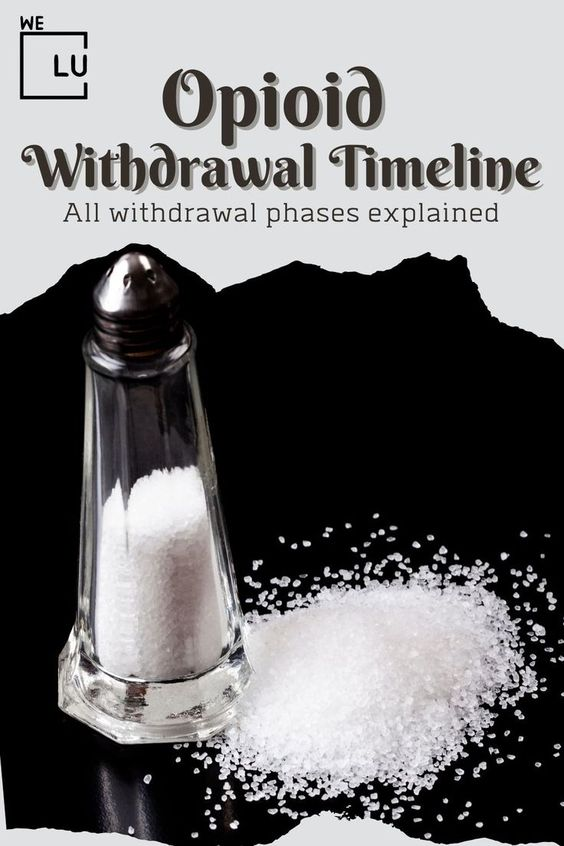
Is it Safe to Quit Tramadol & Alcohol Cold Turkey?
It is not safe to abruptly stop using tramadol and alcohol without medical supervision. Quitting opioids like tramadol suddenly can lead to withdrawal symptoms such as vomiting and diarrhea, which may result in dehydration and imbalances in electrolytes. This withdrawal process can be highly uncomfortable, especially for individuals who are also dependent on alcohol, as it may trigger alcohol withdrawal syndrome.
When alcohol and opioid dependencies are combined, the withdrawal process can become more severe or complicated. Seeking a medical detox is crucial as it allows individuals to undergo withdrawal while being monitored and treated by healthcare professionals. Medications may be prescribed to manage withdrawal symptoms and reduce the risk of life-threatening complications.
Get Help. Get Better. Get Your Life Back.
Searching for Accredited Drug and Alcohol Rehab Centers Near You? We Level Up Texas Is Opening Soon!
Even if you have failed previously and relapsed, or are in the middle of a difficult crisis, we stand ready to support you. Our trusted behavioral health specialists will not give up on you. When you feel ready or just want someone to speak to about therapy alternatives to change your life call us. Even if we cannot assist you, we will lead you to wherever you can get support. There is no obligation. Call our network hotline today.
FREE Addiction Hotline – Call 24/7Signs of Alcohol and Tramadol Use
Mixing alcohol with other drugs in an attempt to enhance the intoxicating effects can lead to unpleasant and hazardous health outcomes.
The combination of these central nervous system depressants can result in various symptoms, including:
- Dizziness.
- Gastrointestinal problems.
- Memory impairment.
- Fatigue.
- Irregular breathing.
- Risk of developing an addiction to tramadol or alcohol.
- Seizures.
Prolonged mixing of tramadol and alcohol may lead to withdrawal symptoms when attempting to cease or reduce consumption. These withdrawal symptoms can include panic attacks, hallucinations, agitation, confusion, and sensations of numbness or tingling in the skin.
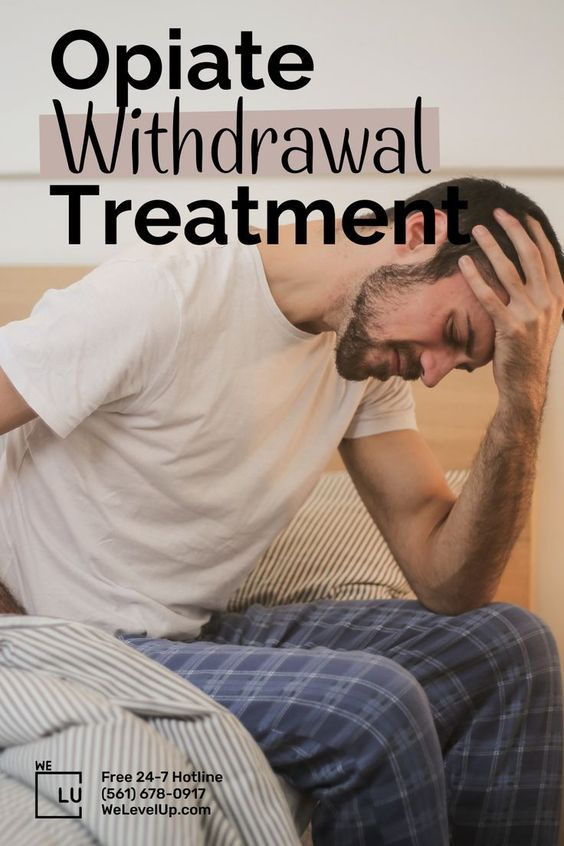
Tramadol Addiction – Related Statistics
Despite declining prescription rates, opioid overdose deaths remain a significant public health concern. Many opioid-related deaths are attributed to the misuse of prescription opioids or illicit opioids, such as heroin and fentanyl. Unfortunately, Norco hydrocodone is included in the problem.
There is a need for increased access to evidence-based treatments for opioid use disorder, such as medication-assisted treatment (MAT) and behavioral therapies, to address the addiction crisis effectively.
1.6 Million
An estimated 1.6 million people in the US were reported to have opioid use disorder in 2019, indicating a diagnosed addiction to opioids.
Source: NCBI
70%
In 2020, over 69,000 drug overdose deaths in the US, and approximately 70% involved opioids.
Source: CDC
18%
In 2019, only about 18% of people with opioid use disorder received specialty treatment for their addiction.
Source: NSDUH
Bioavailability
Bioavailability refers to the extent and rate at which a drug or substance is absorbed into the bloodstream or becomes available at the site of action after administration. It measures the amount of the administered dose that enters the systemic circulation and can produce an effect.
Regarding bioavailability, tramadol hydrochloride tablets boast a 75% bioavailability, whereas extended-release tramadol hydrochloride tablets range between 85% to 90%.
Start a New Life
Begin with a free call to an addiction & behavioral health treatment advisor. Learn more about our dual-diagnosis programs. The We Level Up treatment center network delivers recovery programs that vary by each treatment facility. Call to learn more.
- Personalized Care
- Caring Accountable Staff
- World-class Amenities
- Licensed & Accredited
- Renowned w/ 100s 5-Star Reviews
We’ll Call You
Interactions of Tramadol With Other Drugs
Potential interactions with other drugs are a critical concern when taking tramadol or hydrocodone. These interactions could lead to severe side effects, including breathing problems, coma, or even fatality. Therefore, informing a healthcare professional about all ongoing medications and supplements is crucial before starting tramadol or hydrocodone.
Combining alcohol or illicit drugs with tramadol or hydrocodone can result in hazardous or fatal reactions.
Numerous medications and supplements might interact adversely with tramadol and hydrocodone, such as:
- Antibiotics.
- Antidepressants.
- Anti-anxiety medications.
- Antipsychotics.
- Allergy medications (antihistamines).
- Benzodiazepines.
- Cold and cough medicines.
- Fungal infection medications.
- Heart rhythm medications.
- HIV medications.
- Irritable bowel medications.
- Laxatives
- Muscle relaxants.
- Nausea medications.
- Parkinson’s disease medications.
- Prescription and over-the-counter pain relievers.
- Sedatives or tranquilizers.
- Seizure medications.
- Sleeping pills.
- St. John’s Wort.
- Tryptophan.
- Ulcer medications.
- Urinary problem medications.
When these drugs include acetaminophen along with tramadol or hydrocodone, additional concerns arise. Consuming extra acetaminophen alongside these medications could lead to liver damage.
Various medications, vitamins, and supplements might provoke dangerous effects when taken with hydrocodone or tramadol. Hence, informing a healthcare provider about all substances being taken is crucial.
Gradual Reduction for Safer Withdrawal
Healthcare experts often advise individuals to decrease their tramadol dose rather than abruptly stopping it gradually. Tapering off tramadol can potentially minimize withdrawal side effects and reduce the risk of an overdose. Additionally, this approach can lower the chances of an overdose when someone returns to their previous dose after detox.
Although weaning off tramadol may extend the withdrawal timeline, it generally ensures a more comfortable and secure process. Collaborating with healthcare providers helps determine the safest frequency for reducing the dose during tramadol withdrawal.
Opening Soon! First-Class Facilities & Amenities
World-Class High-Quality Addiction & Mental Health Rehabilitation Treatment
Coming Soon! Rehab Centers TourRenowned Addiction Centers. Serene Private Facilities. Inpatient Rehab Programs Vary.
FREE Addiction Hotline – Call 24/7Proven recovery success experience, backed by a Team with History of:
15+
Years of Unified Experience
100s
5-Star Reviews Across Our Centers
10K
Recovery Success Stories Across Our Network
- Low Patient to Therapist Ratio
- Onsite Medical Detox Center
- Comprehensive Dual-Diagnosis Treatment
- Complimentary Family & Alumni Programs
- Coaching, Recovery & Personal Development Events
Tramadol and Alcohol Withdrawal Detox
Tramadol detoxification ranges in severity from mild to severe, influenced by the level of usage and medications involved. It’s essential to conduct detox under medical supervision due to potential discomfort. Typically, a doctor manages the process by gradually reducing the dose and monitoring symptoms over several weeks.
A proper tapering approach usually limits Tramadol withdrawal symptoms to 5-7 days. Symptoms persisting beyond a week are termed post-acute withdrawal symptoms (PAWS). PAWS may include anxiety, depression, mood swings, insomnia, reduced appetite, irritability, and concentration difficulties, lasting 18-24 months but diminishing over time.
Medical support for managing withdrawal symptoms may involve:
- Metoclopramide for nausea and vomiting.
- Loperamide for diarrhea.
- Ibuprofen or acetaminophen for muscle pain.
- Clonidine for anxiety and sweating.
- Valium for anxiety and insomnia.
- Buprenorphine (Subutex) to alleviate withdrawal symptoms.
- Suboxone (Buprenorphine and Naloxone combo) to mitigate withdrawal symptoms and counteract opioid effects.
Tramadol and Alcohol Addiction Treatment
Upon completing detox, individuals may undergo various therapies and treatments as part of an extensive treatment plan. Rehab after detox is crucial for addressing underlying addiction causes. Rehab occurs in different settings:
- Residential or Inpatient Rehab: This involves residing onsite throughout treatment, receiving constant care, and participating in diverse therapies. Suited for severe addiction cases or those lacking supportive home environments.
- Outpatient Rehab: Requires traveling to the facility for treatment and returning home afterward. Suitable for individuals with supportive environments and reliable transportation.
Ongoing medication maintenance is integral for maintaining sobriety and averting relapse. Medications like methadone, buprenorphine, or naltrexone may be part of this maintenance. Naltrexone, functioning as an opioid antagonist, blocks opioid effects, preventing highs if opioids are used again.
Treatment for opioid use disorder encompasses diverse therapies and supports:
- Counseling: Addresses addiction-related issues.
- Behavioral Therapies: Cognitive-behavioral therapy (CBT), contingency management (CM), or motivational interviewing foster positive behavioral changes.
- Family Therapy: Repairs relationships affected by addiction.
- Vocational Training: Assists in employment post-rehab.
- Case Management: Aids with social services such as securing basic needs and legal aid, allowing individuals to focus on recovery.
Aftercare is essential for ongoing recovery. Post-treatment, participating in individual counseling, mindfulness-based relapse prevention (MBRP), attending support groups like Narcotics Anonymous (NA), utilizing recovery apps, or engaging in recovery management checkups with treatment providers are beneficial.
Comprehensive treatment should address substance use and associated medical, psychological, social, vocational, and legal issues tailored to individual needs.
Why Choose We Level Up Treatment Center?
At We Level Up Treatment Center, our dedicated team of professionals is committed to guiding you through every step of your recovery journey. We prioritize your well-being and provide a nurturing environment conducive to healing and growth.
Take the first step towards recovery today. Contact us to begin your journey to a drug-free life. You don’t have to face addiction alone—we are here to help you reclaim control and achieve lasting sobriety.
Start a New Life
Begin with a free call to an addiction & behavioral health treatment advisor. Learn more about our dual-diagnosis programs. The We Level Up treatment center network delivers recovery programs that vary by each treatment facility. Call to learn more.
- Personalized Care
- Caring Accountable Staff
- World-class Amenities
- Licensed & Accredited
- Renowned w/ 100s 5-Star Reviews
We’ll Call You
How Long Do Opiates Stay in Your System?
Search We Level Up TX Mixing Tramadol and Alcohol, Effects and Dangers Topics & Resources
Sources
- [1]. U.S. National Library of Medicine. (2020). Tramadol. Tramadol and Alcohol, Tramadol & Alcohol, How Long After Taking Tramadol Can I Drink Alcohol – Related Articles
- [2]. National Health Service. (2018). Tramadol. Tramadol and Alcohol, Tramadol & Alcohol, How Long After Taking Tramadol Can I Drink Alcohol – Related Articles
- [3]. World Health Organization. (2014). Tramadol: Update review report. Tramadol and Alcohol, Tramadol & Alcohol, How Long After Taking Tramadol Can I Drink Alcohol – Related Articles
- [4]. Drug Enforcement Administration. (2014). Schedules of controlled substances: Placement of tramadol into schedule IV. Tramadol and Alcohol, Tramadol & Alcohol, How Long After Taking Tramadol Can I Drink Alcohol – Related Articles
- [5]. Beakley, B.D., Kaye, A.M., & Kaye, A.D. (2015). Tramadol, pharmacology, side effects, and serotonin syndrome: A review. Pain Physician, 18, 395-400. Tramadol and Alcohol, Tramadol & Alcohol, How Long After Taking Tramadol Can I Drink Alcohol – Related Articles
- [6]. MedlinePlus. (2018). Serotonin Syndrome. Tramadol and Alcohol, Tramadol & Alcohol, How Long After Taking Tramadol Can I Drink Alcohol – Related Articles
- [7]. Substance Abuse and Mental Health Administration. (2018). National Survey on Drug Use and Health. Tramadol and Alcohol, Tramadol & Alcohol, How Long After Taking Tramadol Can I Drink Alcohol – Related Articles
- [8]. Centers for Disease Control and Prevention. (2018). Understanding the epidemic. Tramadol and Alcohol, Tramadol & Alcohol, How Long After Taking Tramadol Can I Drink Alcohol – Related Articles
- [9]. National Institute on Alcohol Abuse and Alcoholism. (2014). Harmful interactions: Mixing alcohol with medicines. Tramadol and Alcohol, Tramadol & Alcohol, How Long After Taking Tramadol Can I Drink Alcohol – Related Articles
- [10]. U.S. National Library. (2019). Opioid Overdose. Tramadol and Alcohol, Tramadol & Alcohol, How Long After Taking Tramadol Can I Drink Alcohol, tramadol alcohol – Related Articles



